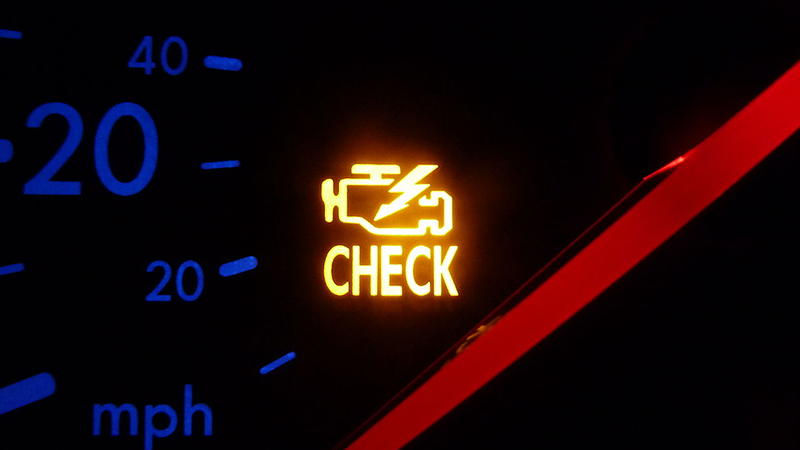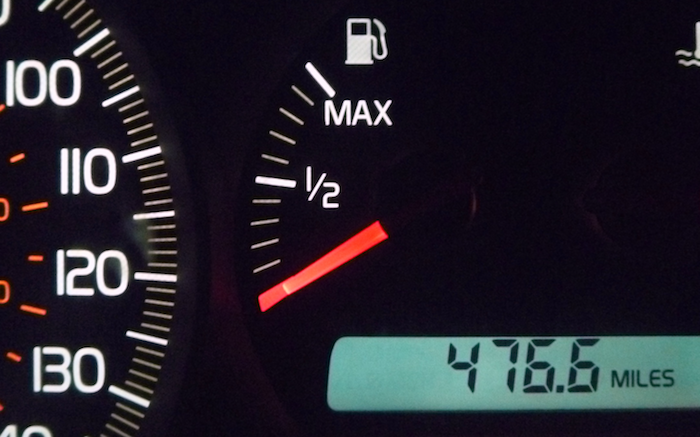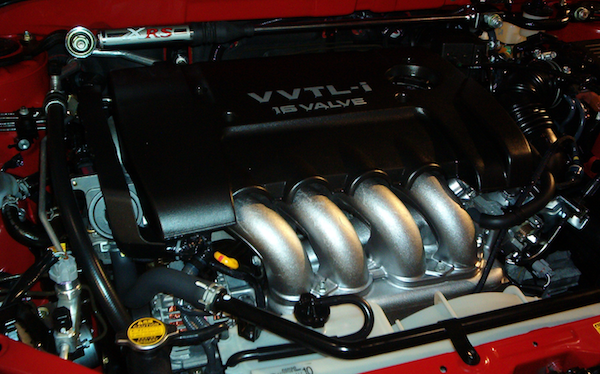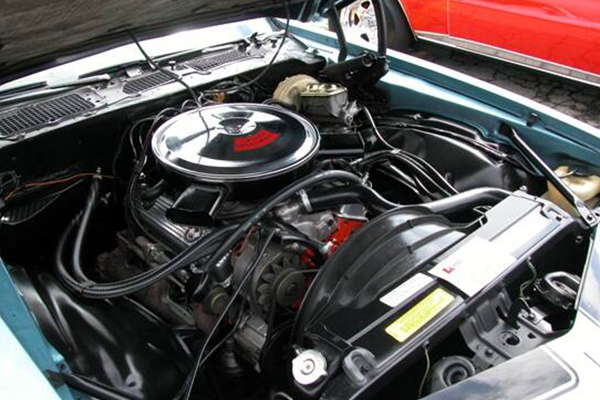So you go to start your vehicle and all the warning lights light up, as per their usual bulb check. They all go out except one — the malfunction indicator lamp (MIL) aka the "check engine" light. Now it's staying on and won't go off again at all.
Source | Wikiuser100000
When the MIL is illuminated, it means that somewhere in your engine and drivetrain control system, a sensor has sent a reading to the engine's computer that's outside of normal parameters, and the computer has registered this as a trouble code. Beginning in the mid-'90s, the Society of Automotive Engineers came up with standards for their OBD II codes for vehicles. Some codes are vehicle-specific, while others are universal for American, European and Asian manufacturers. The trouble codes are broken down into four basic categories:
- P denotes powertrain (engine, transmission, emissions)
- B denotes body (climate control, lighting, airbags, etc.)
- C denotes chassis (antilock brakes, steering, electronic suspension, vehicle stability control)
- U denotes network communications (controller area network wiring and modules, post-2006 vehicles)
Of these, an engine code that has a 0 as its second digit is one that applies across the board, to all vehicles and manufacturers. One with a 1 as its second digit is an “enhanced" code that's manufacturer specific and may require extra diagnostic information pertaining to that vehicle. Remember: the MIL is not a general-purpose warning, and problems like low oil pressure or overheating will not illuminate the MIL, although they should trigger other warning lights or gauge readings.
Accessing the Trouble Codes
When the MIL is illuminated, getting to the engine codes themselves is a simple process. A tech can connect a diagnostic code reader or scanner device to a port in the passenger compartment (often under the steering column), and the engine codes will show up on the scanner, usually showing the code itself and a one-line definition. Sometimes a vehicle may have several engine codes stored at once, and it's up to the technician to interpret them and “read between the lines" to understand what triggered the code in the first place. You can get a reading done at any Advance store.
This saves a lot of time and guesswork — in years past, a tech (or shade-tree mechanic) would have to rely on intuition and educated guesses to troubleshoot a vehicle's problems, which would sometimes lead to a dead end. The engine code, however, does not tell the tech which part to replace. That's where the tech's own diagnostic skills come into play.
A Few Common Trouble Codes and Their Causes
This is a roundup of some of the most common engine codes, many of which can cause poor drivability, rough running, a drop in fuel economy or heightened emissions (and can cause your vehicle to fail an emissions test):
P0411, P0440, P0442, P0446, P0445: Your vehicle contains an evaporative emissions control system that recirculates the fuel vapors that might come from your gas tank. This EVAP system consists of vent hoses and a charcoal canister that captures fuel vapors, as well as a valve that purges the fumes back into the engine when it's running. The P0455 code, for instance, indicates a loose or missing gas cap, while P0442 denotes a cracked or loose vapor hose or leak in the EVAP canister. Technicians can use a smoke generator that pressurizes the EVAP system and indicates leaks.
P0300, P0301, P0302, P0303, P0304, P0305: These engine codes all indicate an engine misfire, which is detected when the crankshaft position sensor notes an irregularity in the speed of the crankshaft while the engine runs. These engine codes can mean a vacuum leak from a cracked vacuum line or intake manifold gasket, which results in a lean fuel mixture. Misfire codes, such as P0301, will usually specify a misfire on cylinder 1, which can mean a worn spark plug, a problem with the plug wire or coil-on-plug, dirty fuel injector or a burned valve (note that the code doesn't indicate the specific cause).
P0171, P0174: These are also fuel trim codes that show a lean-running condition, which a tech can narrow down further with an advanced scan tool. Causes could include vacuum leaks, weak fuel pump or fuel pressure regulator, leaky EGR valve, leaky PCV valve, clogged fuel injector or a dirty/defective Mass Airflow Sensor.
P0420, P0430: Any vehicle with OBD II standards will feature an oxygen (O2) sensor closer to the catalytic converter. The converter can be fouled due to an engine that's burning oil or has an internal coolant leak. It's also common for fuel to damage catalytic converters. P0420 and P0430 engine codes indicate a problem with the convertor. Eventually, a fouled or worn converter can prevent the vehicle from running altogether.
P0133, P0135, P0141: These indicate problems with the O2 sensor, which monitors the content of exhaust gases and informs the computer so it can adjust fuel metering. A worn or carbon-fouled O2 sensor will trigger these engine codes, and one of these codes along with a random misfire code can point to a vacuum leak on the engine.
These are a few of the more common engine codes on many vehicles, but remember that making the right call on diagnosis and troubleshooting can often require an experienced tech.









